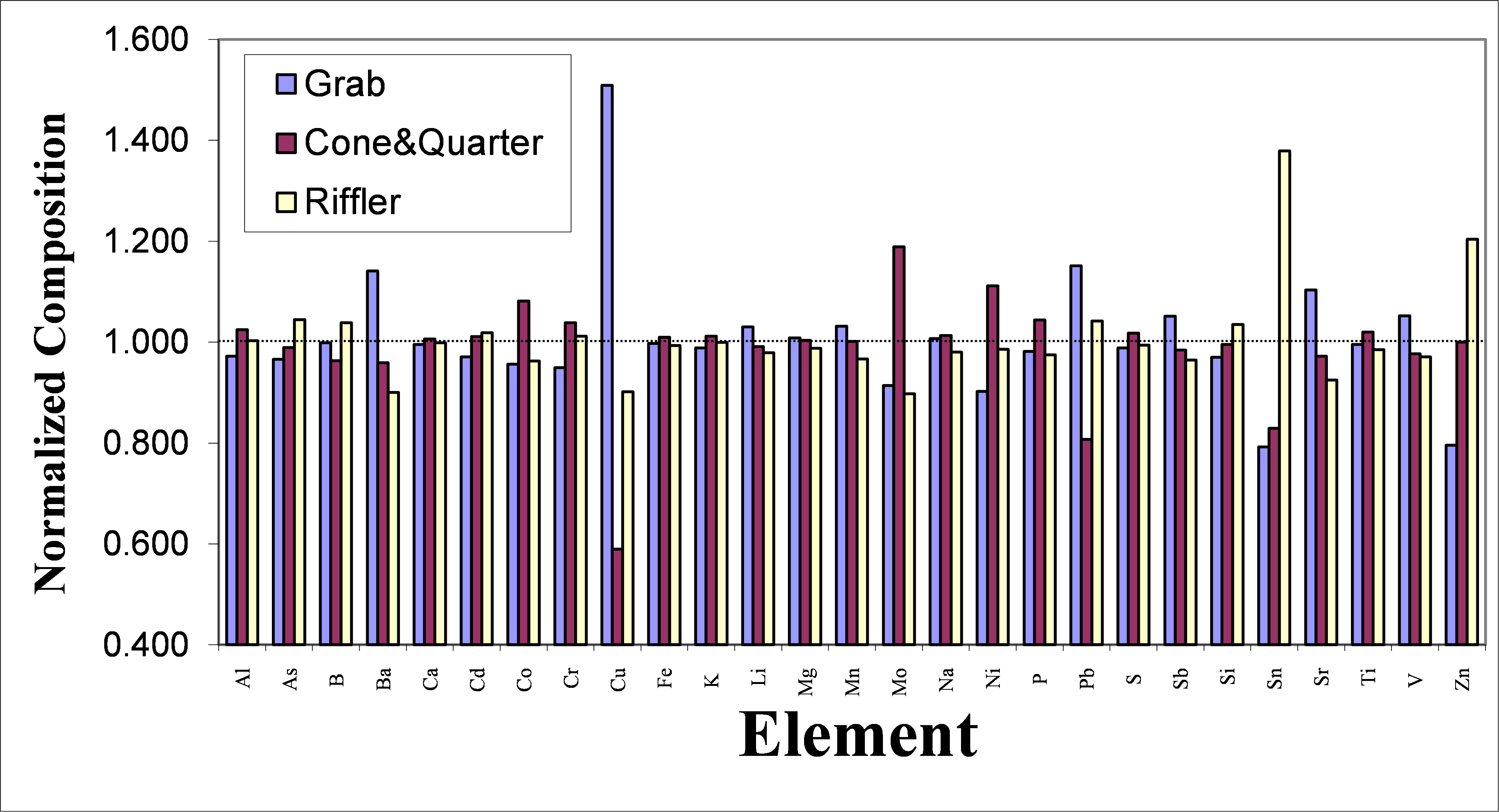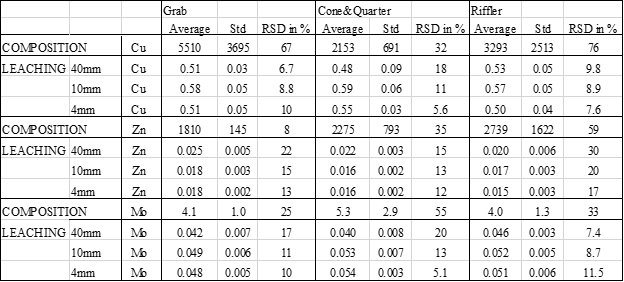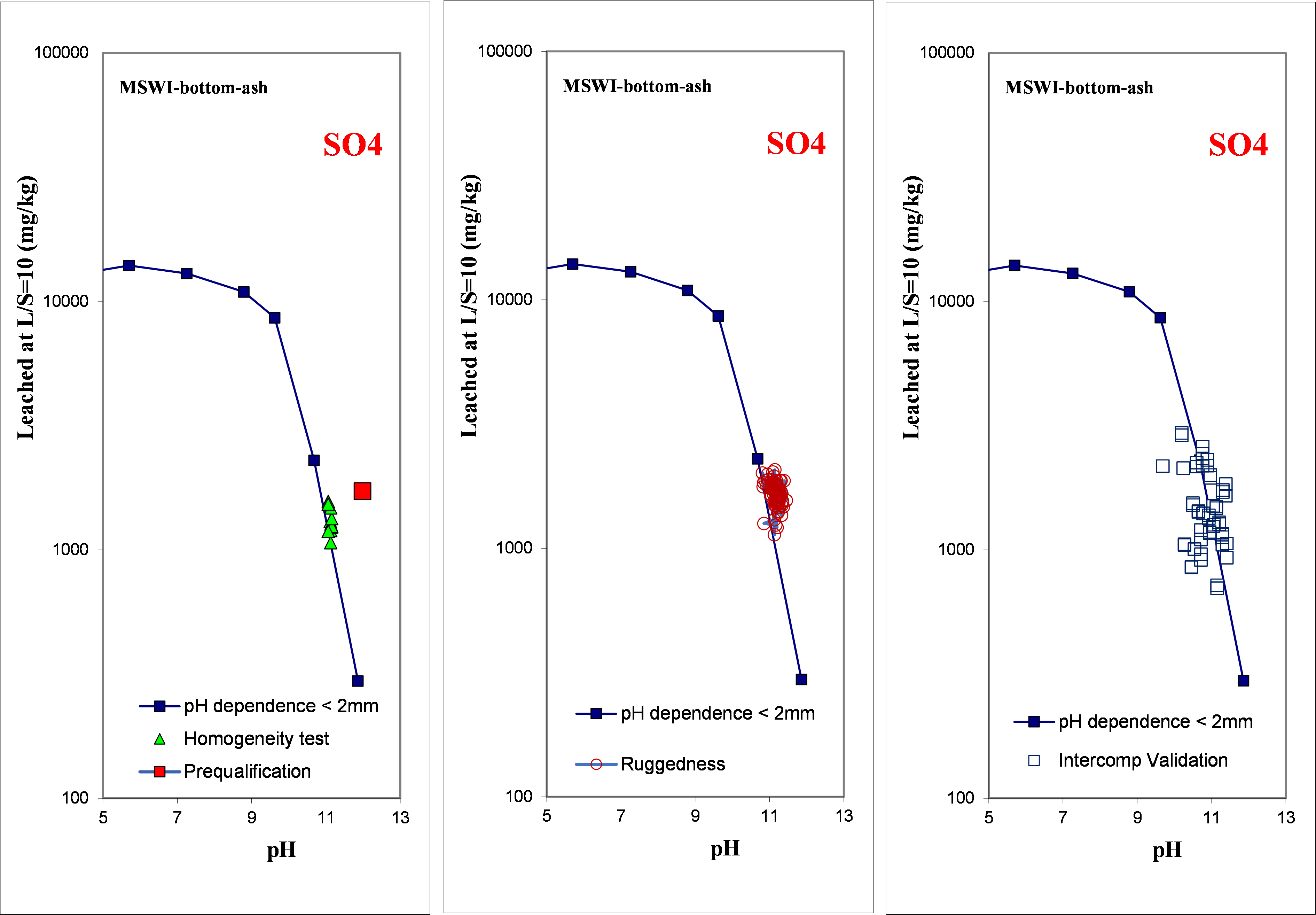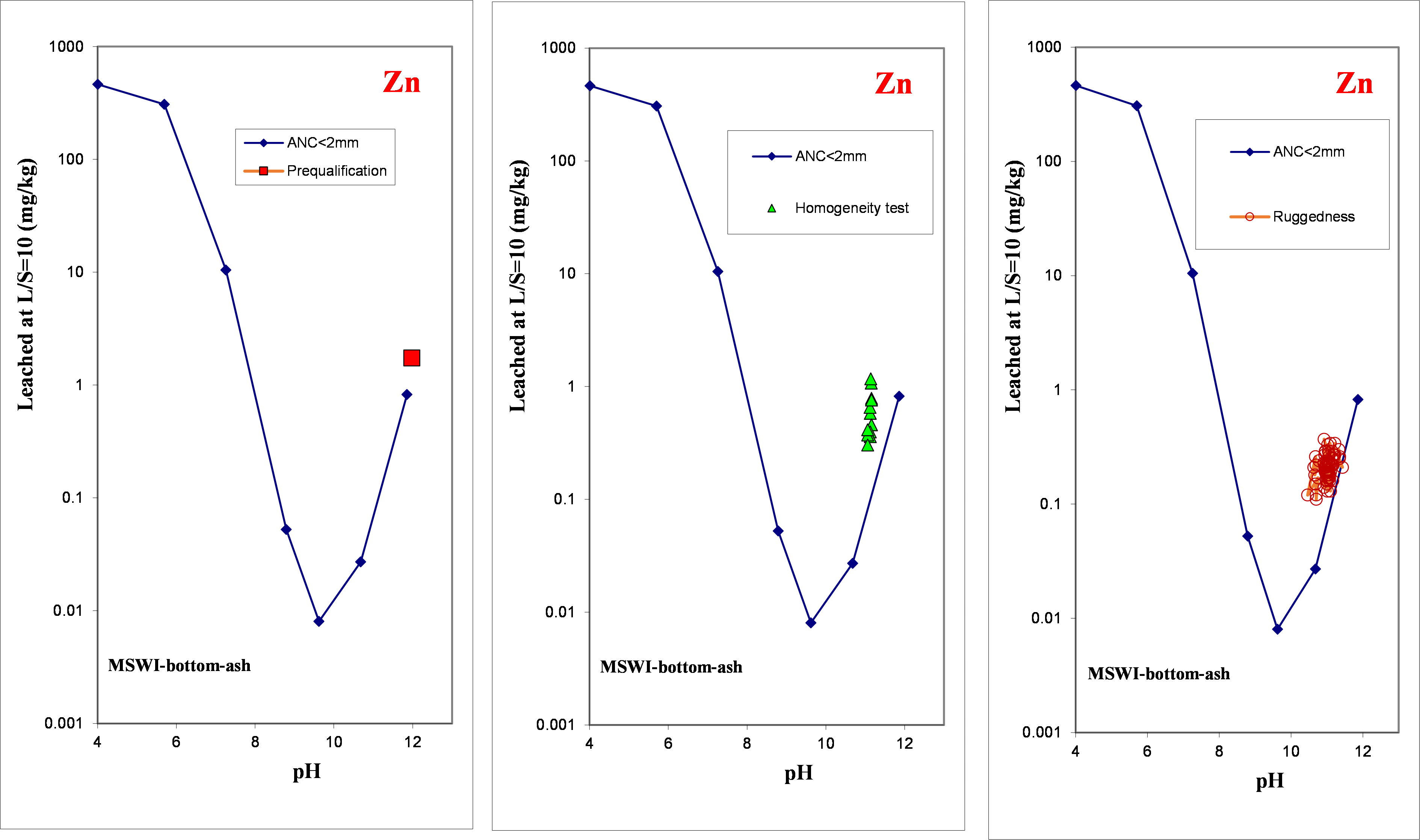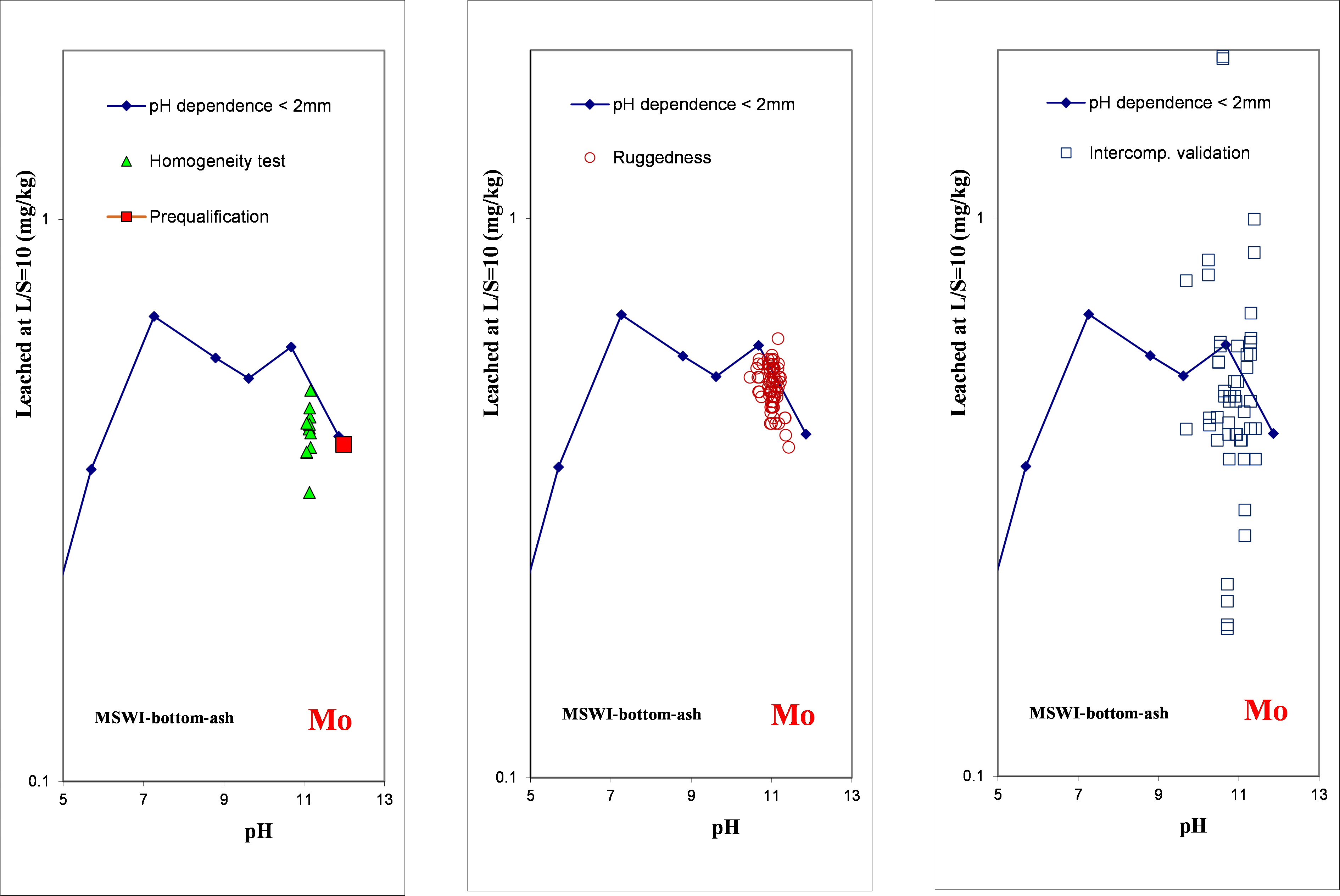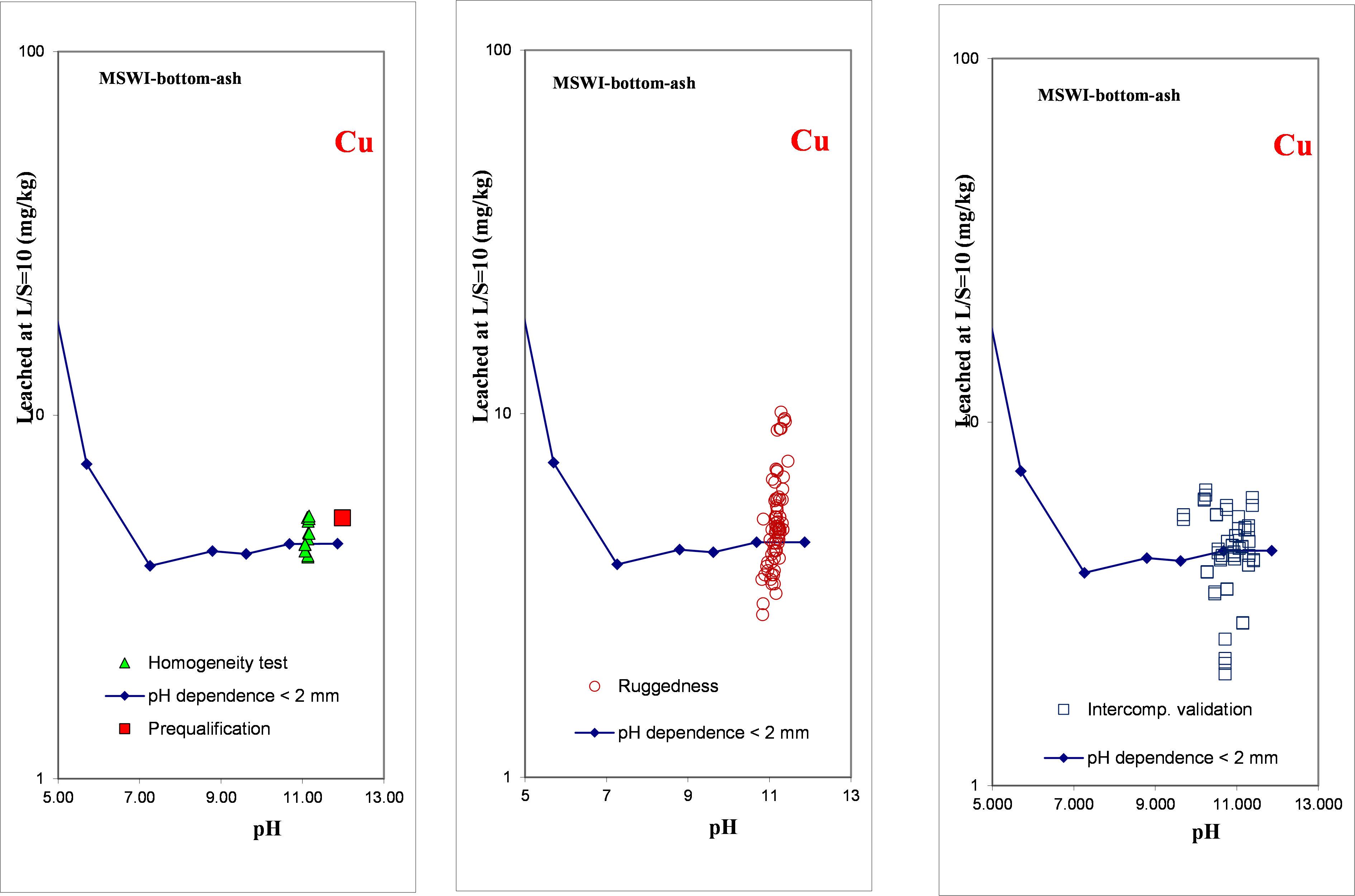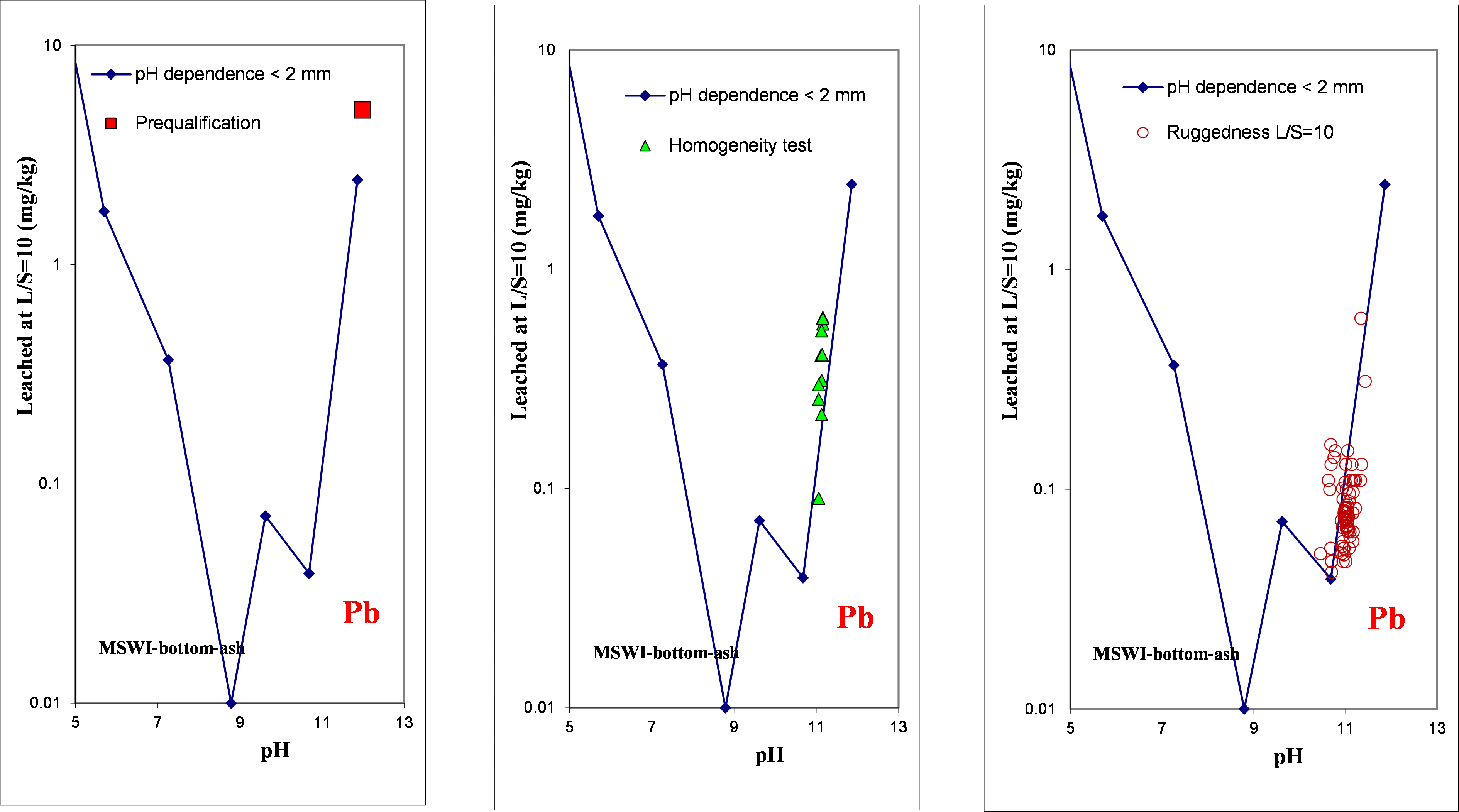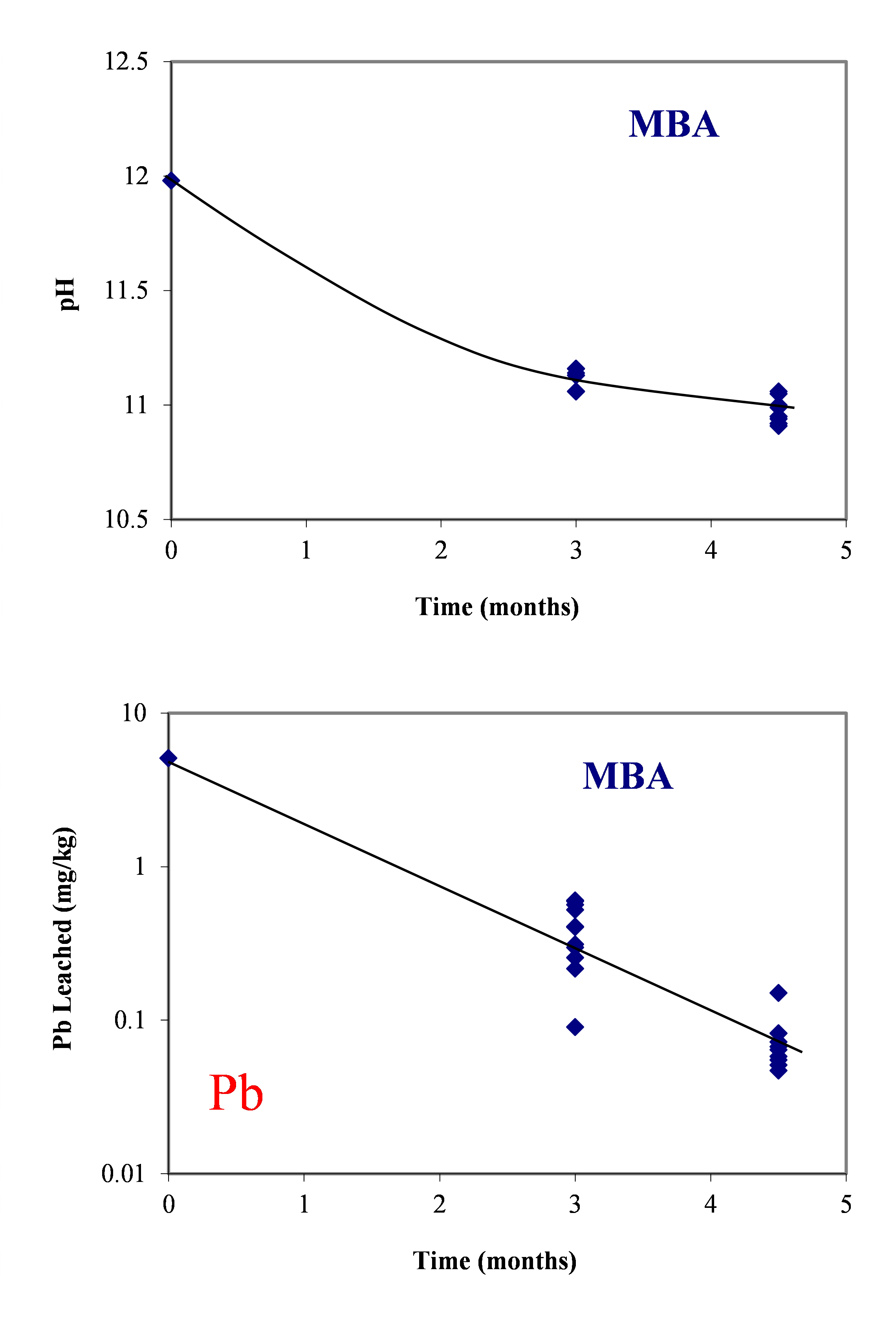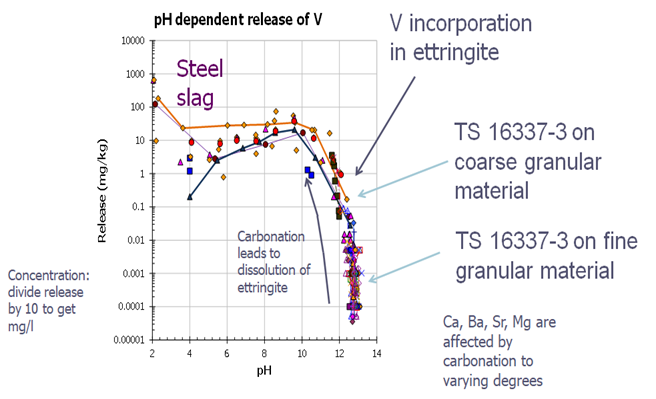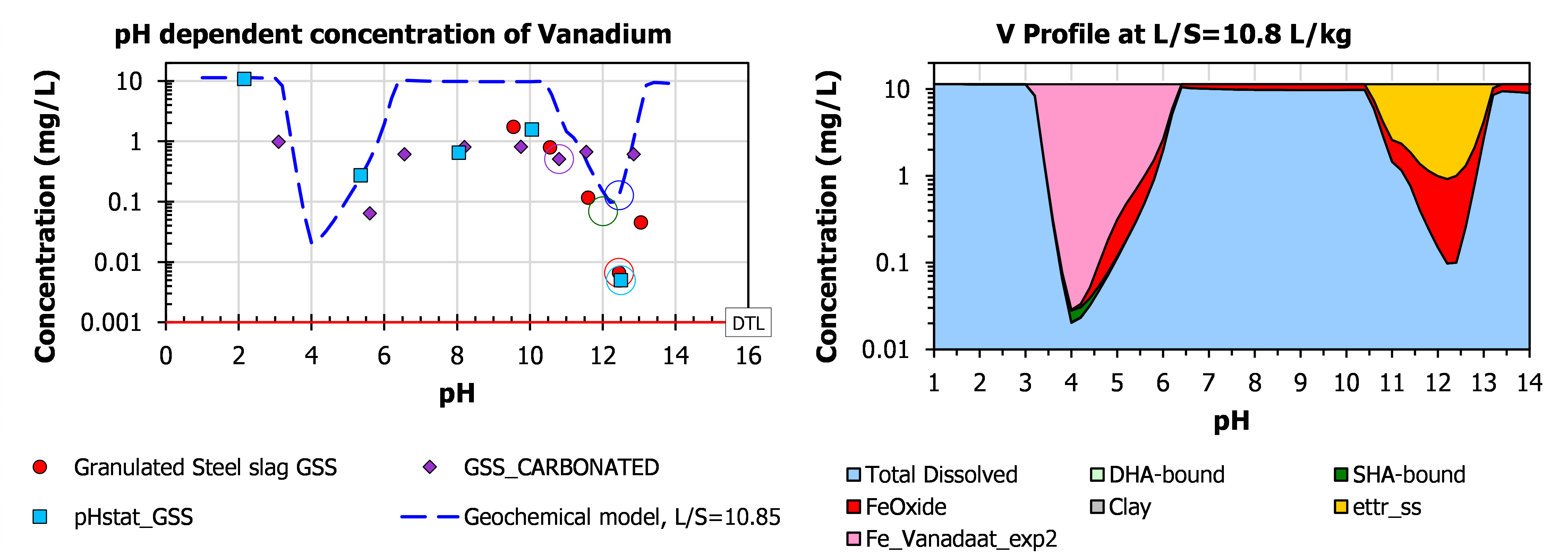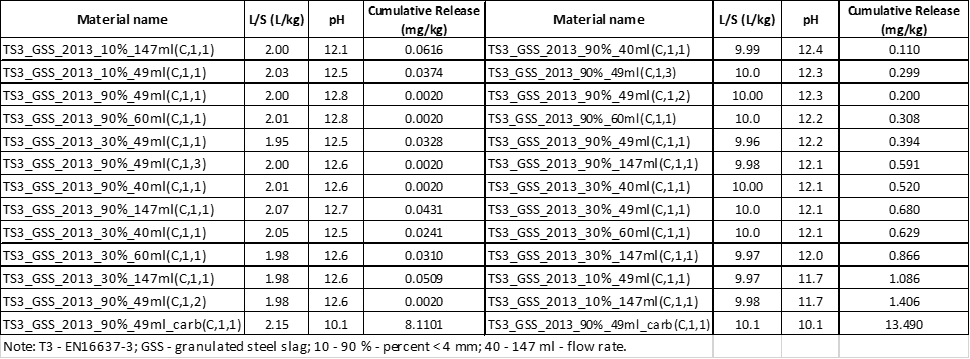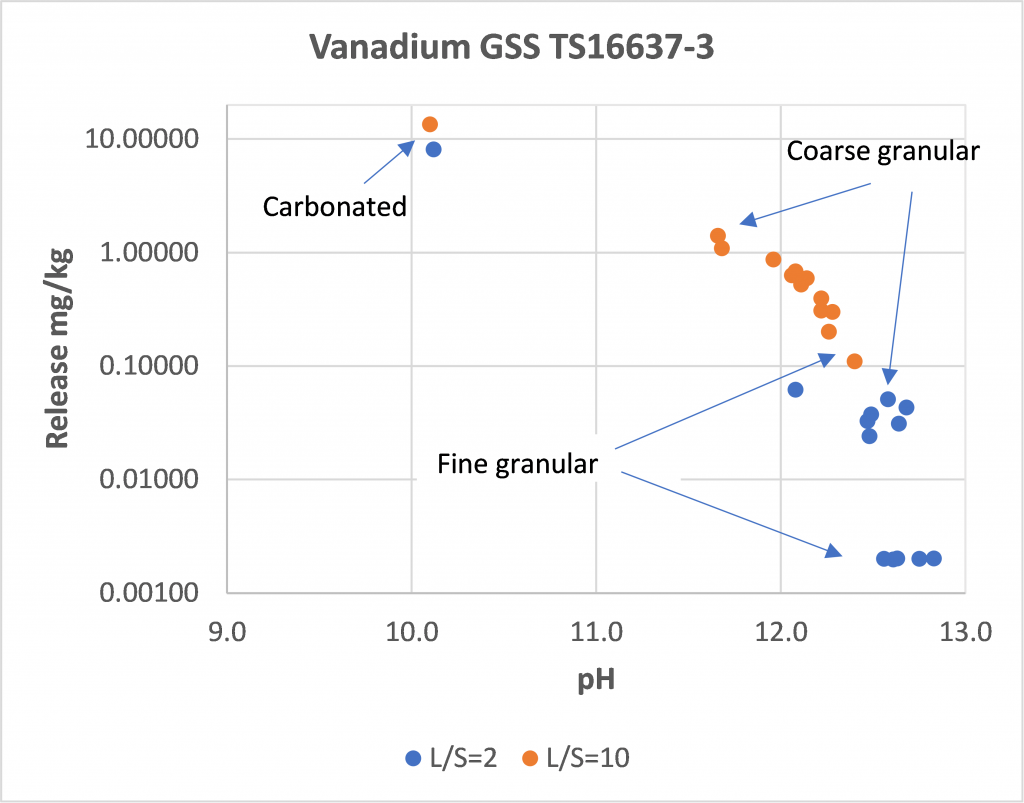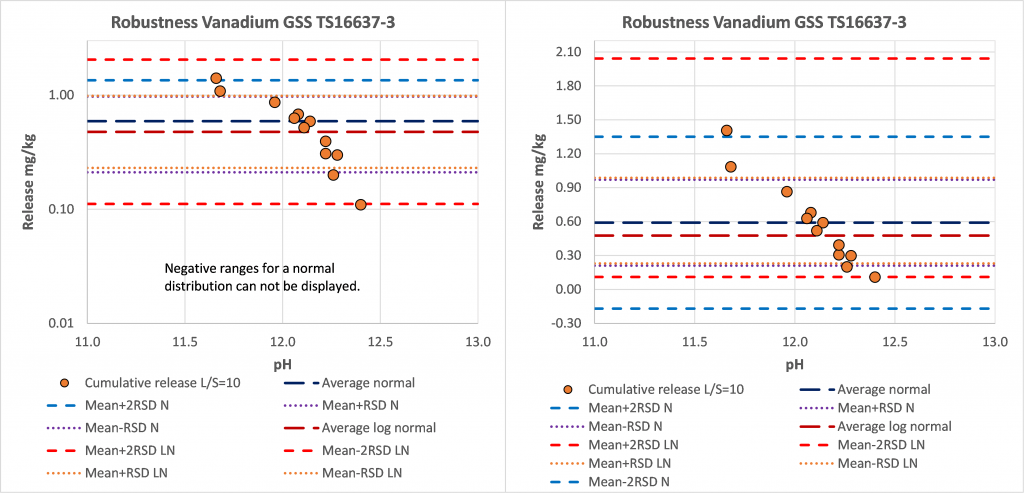Leaching tests, eluate analysis methods and content analysis methods have been validated over the last decades. From various standards and underlying studies performance data have been gathered for inorganic and organic substances with respect to leaching, eluate analysis and content analysis (period 1995 -2019). In tables 1 – 4 performance data are given for inorganic and organic substances on leaching tests, eluate analysis and content analysis.
Table 1 – Summary of performance data for leaching tests – inorganic substances


Figure 1. Performance data for leaching of inorganic substances by different methods expressed as RSDR; uncertainty bars given as ± RSDr .

Table 3 – Summary of performance data for content and eluate analysis – inorganic substances

Note to table 3: The number of participating labs varies between 12 and 20.
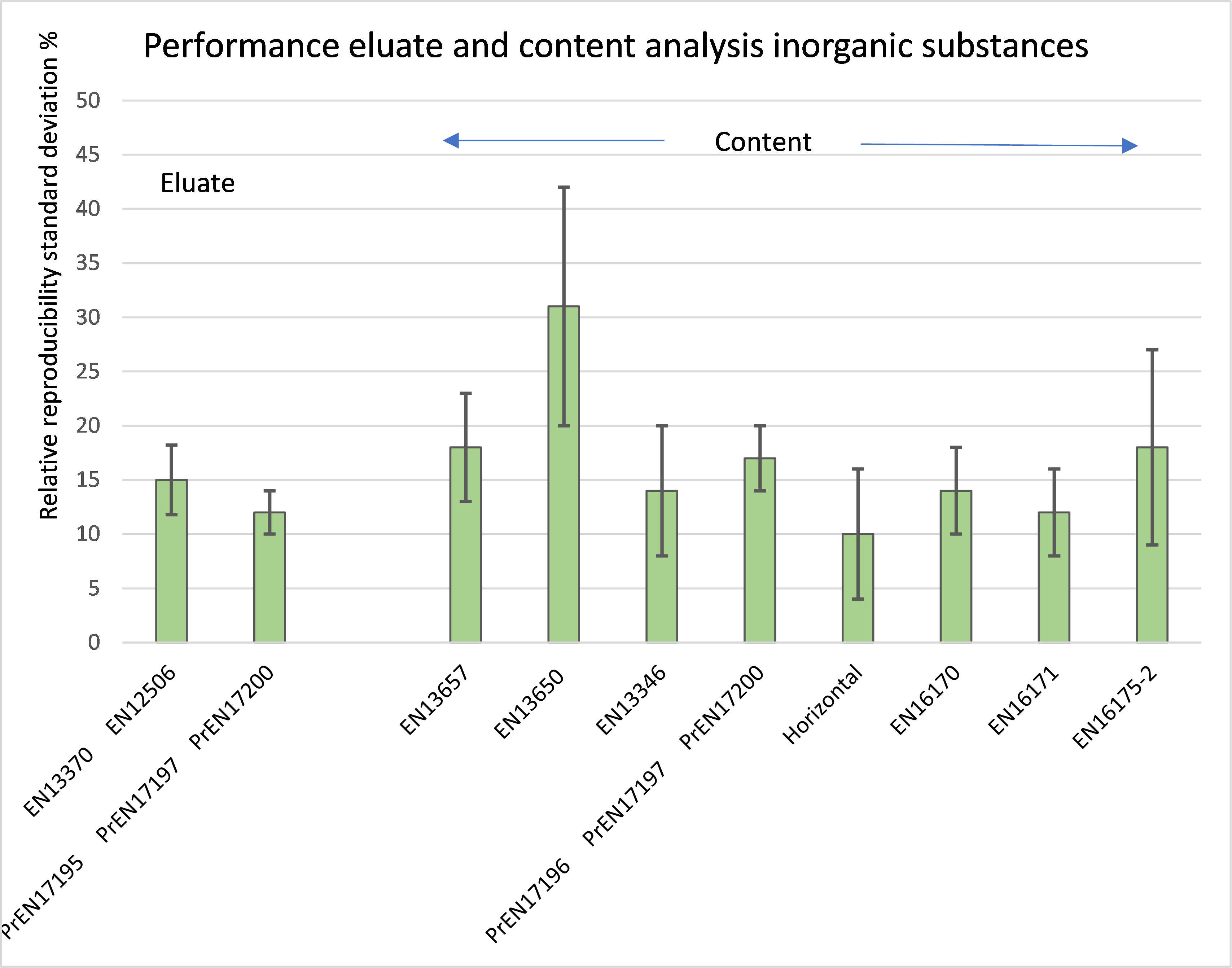
Figure 2. Performance data for content analysis of inorganic substances by different methods expressed as RSDR; uncertainty bars given as ± RSDr .
Table 4 – Summary of performance data for content and eluate analysis – organic substances
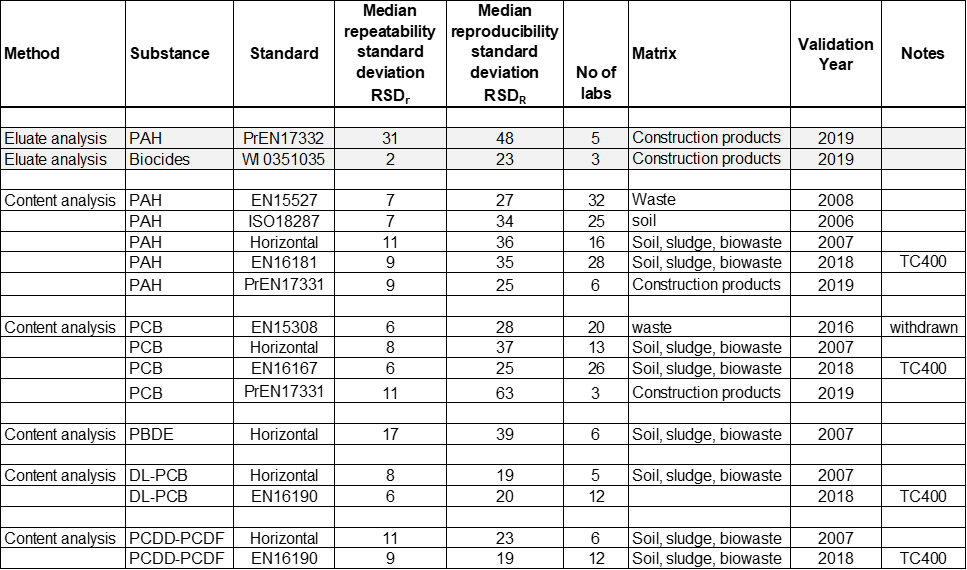
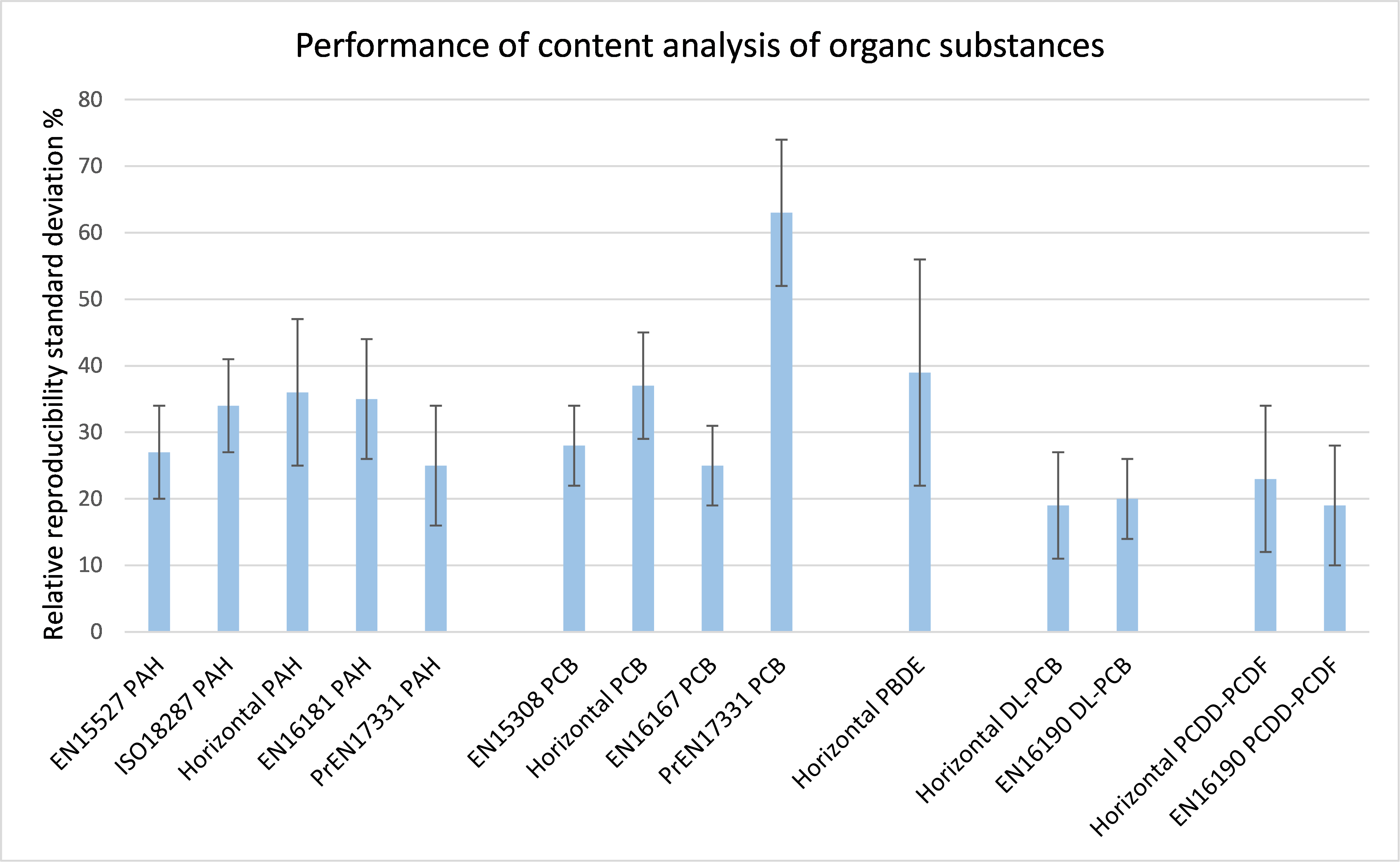
Figure 3. Performance data for content of organic substances by different methods expressed as RSDR; uncertainty bars given as ± RSDr .
The relative reproducibility standard deviation provides a determination of the differences (positive and negative) that can be found (with a 68 % statistical confidence) between a single test result obtained by a laboratory using its own facilities and another test result obtained by another laboratory using its own facilities, both test results being obtained under the following conditions : The tests are performed in accordance with all the requirements of the respective standards and the two laboratory samples are obtained from the same primary field sample and prepared under identical procedures. The relative repeatability standard deviation refers to measurements obtained from the same laboratory, all other conditions being identical. The reproducibility standard deviation and the repeatability standard deviation do not cover sampling but cover all activities carried out on the laboratory sample including its preparation from the primary field sample.
The values are indicative values of the attainable precision. In all validation studies a limited number of materials and parameters are tested. Consequently, for other materials and parameters, performance characteristics may fall outside the limits as derived from the respective validation studies. For inherently heterogeneous materials, the deviations can be larger than the values given in the tables. With respect to leaching a special situation applies, when the leaching happens to take place in a pH domain where relatively steep concentration gradients occur, which turns out be more common than generally realized. In this case, applying log-normal statistics is more appropriate.
RSD as a function of concentration
The performance data in the tables and graphs given above cannot be judged properly without considering the concentration levels in terms of content, eluate concentration or leaching test outcome. See separate information on repeatability (RSDr) and reproducibility standard deviations (RSDR) as obtained in these validation studies for organic and inorganic substances for content and eluate analysis as a function of concentration, which complements the tabulated performance data.
Low concentration levels in validation
For instance, the high uncertainty in PCB obtained by EN 17331 is caused by the low concentration level in the construction product used in the intercomparison validation. The concentration level is around 10 µg/kg for the individual PCB congeners analysed and 0.06 mg/kg for the sum of PCB’s. The Dutch limit for the sum of PCB’s is 0.5 mg/kg, which implies that an RSD of 60 % ensures that the information to decide if the sample exceeds the limit can be taken without a problem. From the RSDr and RSDR for the content of PCB as a function of concentration, it is also clear that, when the PCB concentration would reach 0.5 mg/kg in a construction product, the RSDR would be around 30 % and the RSDr around 8 %. This is the current state of the art of analysis of PCB content in materials and products and fit for purpose.



